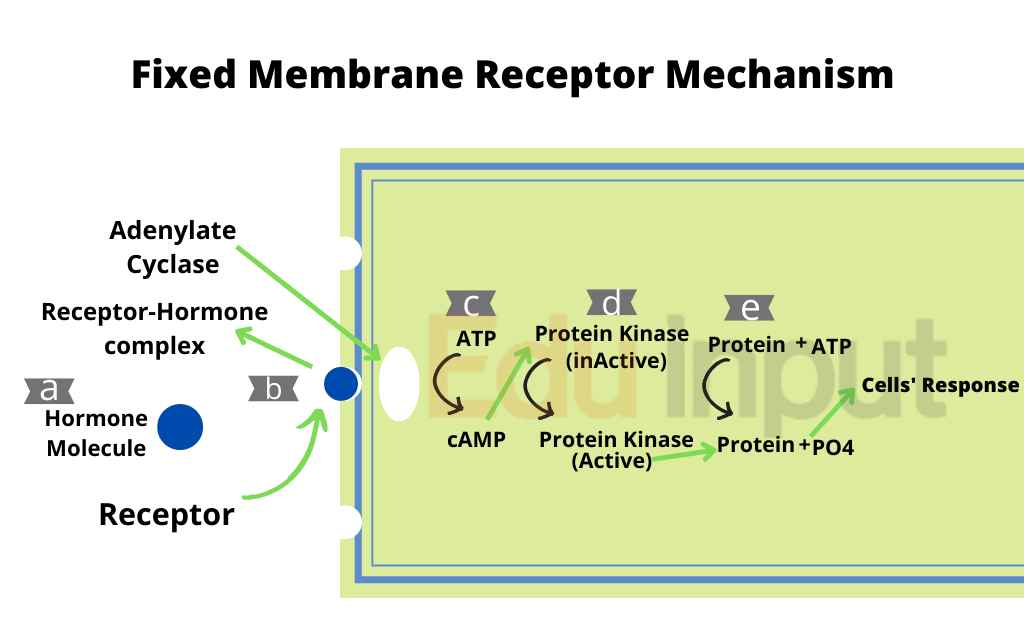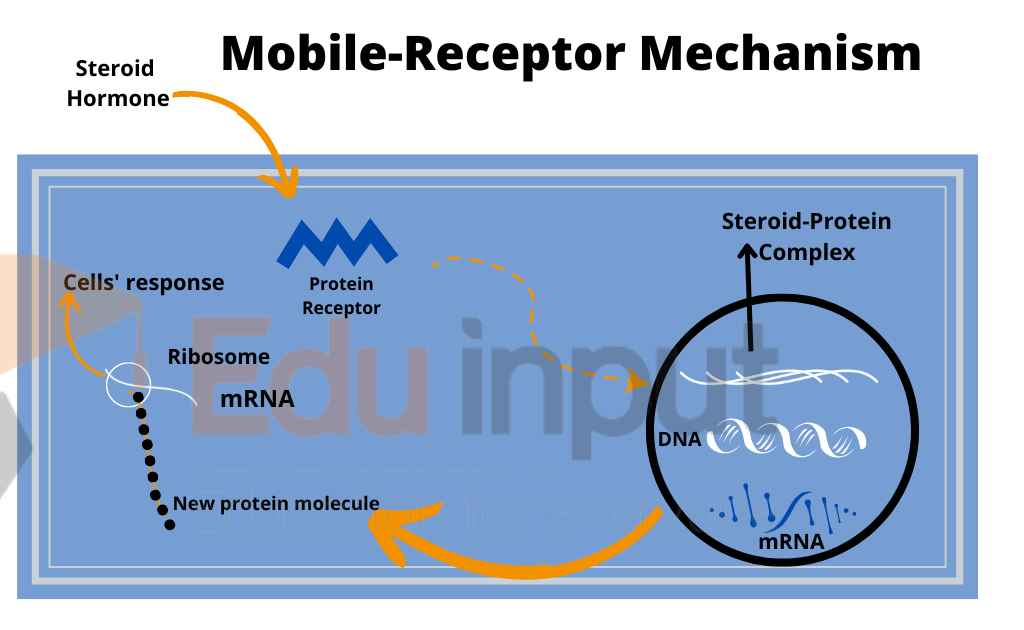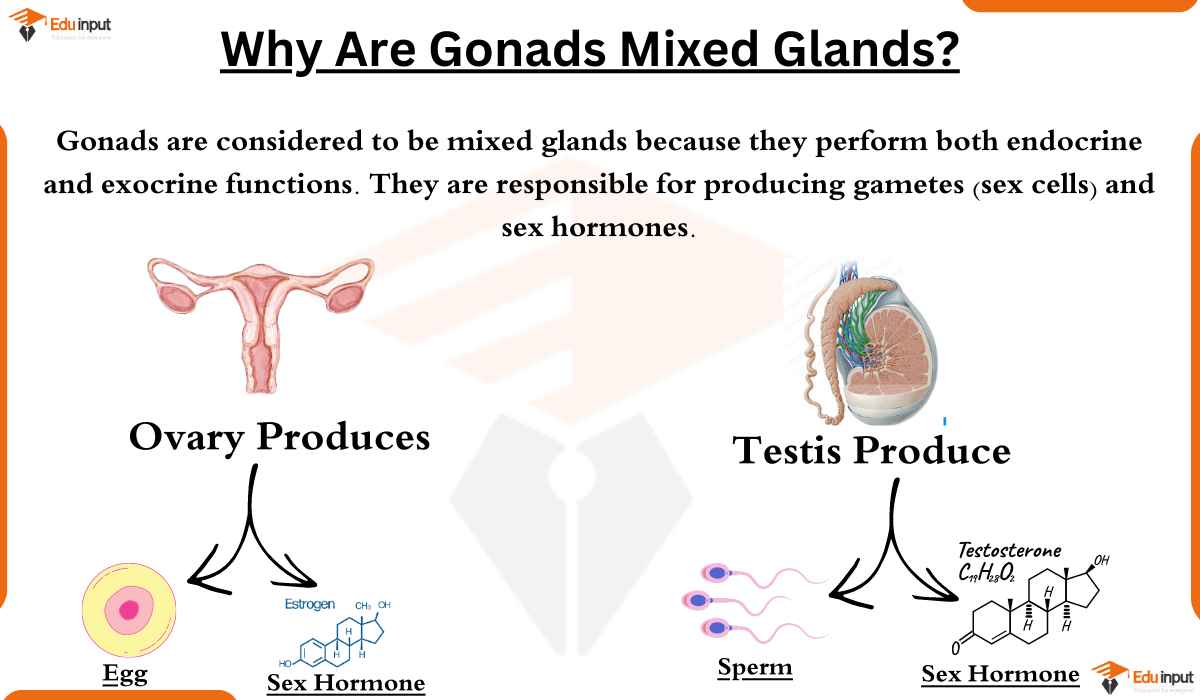Mechanism of Hormone Action | Fixed Membrane Receptor Mechanism | Mobile-Receptor Mechanism
The nervous system and endocrine system are the two controlling systems of an animal body. Hormones modify the biochemical activity of a target cell or tissue to maintain Homeostasis. Your body’s hormones play an important role in regulating various processes by binding with specific receptors on target cells.
This triggers intracellular signals that can alter membrane permeability, act through a second messenger system, or activate specific genes to make new proteins.
Types Of Mechanisms Of Hormone Action
There are two basic mechanisms of hormone action.
1. Fixed Membrane Receptor Mechanism:
The proteins or amines act by a fixed membrane receptor mechanism. Proteins and amines are water-soluble. So they cannot diffuse through the plasma membrane. These hormones show their response through receptors. These receptors are present on the plasma membrane of the target cell.
2. Mobile-Receptor Mechanism:
This mechanism is applied to the mobile receptor mechanism. These hormones can diffuse through the plasma membrane. Then they enter the cytoplasm. They bind with the cytoplasmic receptors and show their response.
Fixed Membrane Receptor Mechanism
1. An endocrine cell secretes a water-soluble hormone. This hormone circulates through the blood stream.
2. It reaches the cells of the target organ. The hormone acts as an extracellular messenger. There is a specific receptor on the plasma membrane for the binding of this hormone.
3. The hormone-receptor complex activates the enzyme adenylate cyclase in the membrane. The activated enzyme converts ATP into a cyclic AMP. Cyclic AMP becomes the second messenger.
4. Cyclic AMP diffuses throughout the cytoplasm. It activates an enzyme called protein kinase. Protein kinase shows the specific response. Now the target cell performs its specific function.
5. An enzyme phosphodiesterase inactivates cyclic AMP. The receptor on the plasma membrane loses the first messenger. Now the cell is ready for a new reaction.

Mobile Receptor Mechanism
Mobile receptor mechanism Steroid hormones pass easily through the plasma membrane. Thus their receptors are present inside the target cells. The mobile receptor mechanism stimulates protein synthesis. It has the following mechanism.
1. The gland releases this hormone into the blood. It reaches the target cell. The steroid hormone enters the target cell by diffusion.
2. It binds to a specific protein receptor in the cytoplasm. Steroid-protein complex is formed. This complex develops an affinity for DNA.
3. It enters the nucleus of the cell. Now it binds to DNA. It stimulates the transcription of specific genes. It forms messenger RNA.
4. The newly transcribed mRNA leaves the nucleus. It moves to the rough endoplasmic reticulum and initiates protein synthesis. Some of the newly synthesized proteins may be enzymes. This enzyme may affect cellular metabolism. It causes the cellular response to the specific steroid hormone.

Difference Between Steroid Hormone Receptor and Peptide Hormone Receptor
- The steroid hormone does not affect the synthesis of protein and the Peptide hormone affects only protein.
- Steroid hormones bind the nuclear receptors while Peptide hormones can bind only to G protein.
- Steroid hormones affect metabolism peptide doesn’t.
- Target cells react more rapidly under the action of steroid hormone, while under peptide hormone action Target cells react slowly
FAQs
Where will a hormone first bind to the nuclear receptor?
A hormone will first bind to the ligand-binding domain (LBD) of the nuclear receptor, located in the cytoplasm of the cell. Once bound, the hormone-receptor complex can then travel to the nucleus and bind to specific DNA sequences called hormone response elements (HREs), triggering transcriptional changes.

 written by
written by 




Leave a Reply